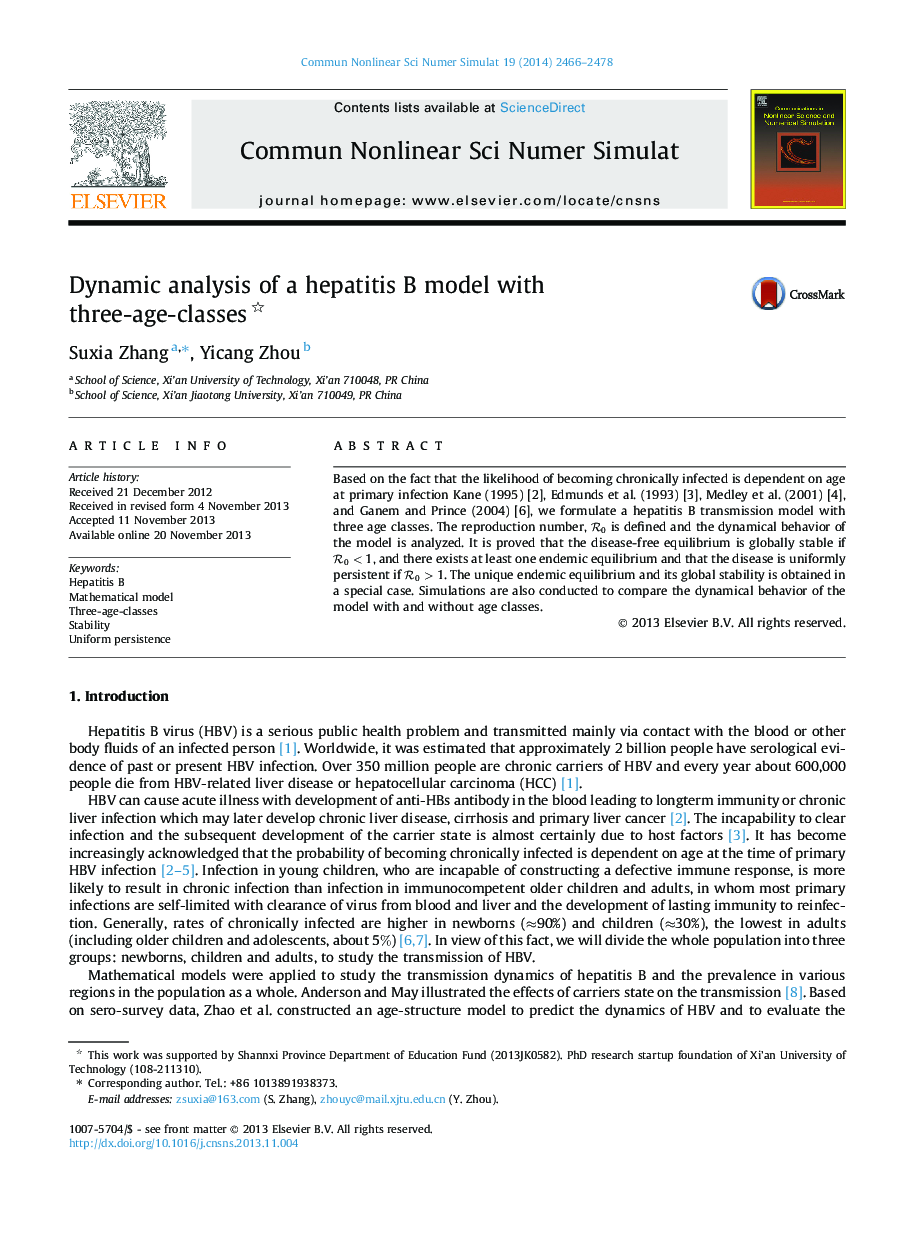| Article ID | Journal | Published Year | Pages | File Type |
|---|---|---|---|---|
| 755763 | Communications in Nonlinear Science and Numerical Simulation | 2014 | 13 Pages |
•A model with three age classes for hepatitis B transmission is formulated.•Theoretical results including stability and persistence are obtained.•A special case of the model is analyzed theoretically.•It originally compares two types of HBV models.•Simulations are conducted to analyze the behaviors of the model.
Based on the fact that the likelihood of becoming chronically infected is dependent on age at primary infection Kane (1995) [2], Edmunds et al. (1993) [3], Medley et al. (2001) [4], and Ganem and Prince (2004) [6], we formulate a hepatitis B transmission model with three age classes. The reproduction number, R0R0 is defined and the dynamical behavior of the model is analyzed. It is proved that the disease-free equilibrium is globally stable if R0<1R0<1, and there exists at least one endemic equilibrium and that the disease is uniformly persistent if R0>1R0>1. The unique endemic equilibrium and its global stability is obtained in a special case. Simulations are also conducted to compare the dynamical behavior of the model with and without age classes.
